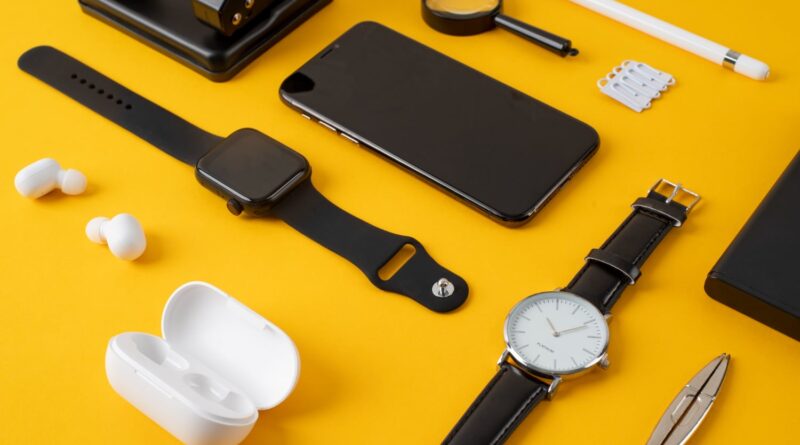As we look towards 2025, the electronic gadget landscape continues to evolve at an incredible pace. From AI-powered wearables to revolutionary smart home devices, technology is pushing boundaries like never before. I’ve researched the most anticipated technological innovations coming our way, and the future looks nothing short of extraordinary. Ready to discover what’s on the horizon for tech enthusiasts? Let’s explore the cutting-edge gadgets that will likely define 2025.
Spis treści:
Neural Interface Wearables
The convergence of neuroscience and wearable technology is creating a new category of devices that can interpret brain signals with unprecedented accuracy. The Neural Headband Pro stands out as the frontrunner in this space, offering users the ability to control smart home devices, smartphones, and computers using only their thoughts. Early testing shows that users can master basic commands within hours, not days or weeks as with previous generations of neural interfaces.
What makes these neural wearables particularly exciting is their application beyond convenience. Medical researchers are already exploring how these devices can help people with mobility limitations regain independence. The technology uses non-invasive sensors that sit against the scalp, detecting neural patterns that the device’s AI can interpret as specific commands. Privacy concerns have been addressed with military-grade encryption that keeps your neural data secure and processing that happens locally on the device rather than in the cloud.
Holographic Communication Devices
Remember when video calls seemed futuristic? In 2025, holographic communication devices are expected to make video conferencing feel as outdated as rotary phones. The HoloConnect Terminal projects realistic, three-dimensional images of conversation participants, creating the illusion that everyone is in the same room. The system uses a combination of multiple cameras to capture a person from various angles and specialized projection technology to recreate their image elsewhere.
The most impressive aspect is the spatial audio that accompanies these projections, making voices sound as if they’re coming directly from the holographic image. Early adopters in business settings report that holographic meetings significantly improve engagement and reduce communication misunderstandings compared to traditional video calls. While the technology still requires a dedicated projection space and specialized equipment, manufacturers are working on more compact versions that could eventually fit on a desk or tabletop, bringing this technology into more homes and offices.
Sustainable Energy Generators
As environmental consciousness continues to influence consumer choices, personal sustainable energy generators are becoming a must-have technology. The PowerCube stands at the forefront, combining solar, kinetic, and thermal energy harvesting in a device roughly the size of a small speaker. This versatile gadget can charge multiple devices simultaneously while storing excess energy for later use.
What sets modern energy generators apart is their efficiency and integration capabilities. The latest models can automatically prioritize which devices to charge based on usage patterns and battery status. They also connect to smart home systems to contribute power during peak electricity pricing hours, potentially reducing household energy bills. The materials used in these generators are increasingly sustainable as well, with manufacturers incorporating recycled components and designing the devices for easy repair and eventual recycling. For travelers and outdoor enthusiasts, these compact generators provide reliable power without needing to find an outlet, making them practical for a wide range of lifestyles.
Adaptive Smart Glasses
Smart glasses are making a significant comeback, but with technology that makes early attempts look primitive. The OptiView Pro glasses feature transparent AR displays that overlay digital information onto the real world without obscuring vision. Unlike previous generations that were bulky and obvious, these new smart glasses are nearly indistinguishable from designer eyewear.
The adaptive nature of these glasses refers to their ability to understand context. They can automatically adjust what information they display based on where you are and what you’re doing. Walking past a restaurant? They’ll subtly show reviews. In a grocery store? Nutritional information appears next to products. The voice control is sophisticated enough to understand natural language commands in noisy environments, and eye-tracking technology allows you to interact with the digital elements just by looking at them. Privacy features allow users to instantly disable all recording functions, addressing concerns that plagued earlier smart glasses. With prescription lens compatibility and all-day battery life, these devices are positioned to replace smartphones for many daily tasks.
Environmental Monitoring Personal Assistants
With increasing concerns about indoor air quality and environmental health, personal environmental assistants like the AtmoSphere have emerged as essential household gadgets. These devices go beyond simple air quality monitoring, offering comprehensive sensing of temperature, humidity, VOCs, particulate matter, carbon dioxide, and even noise pollution levels. What makes them truly innovative is their proactive approach to environmental management.
The latest models don’t just tell you there’s a problem—they help solve it. When detecting poor air quality, they can automatically communicate with your smart home system to activate air purifiers, adjust ventilation, or even open windows if outside air is cleaner. The health implications are significant, with studies showing improved sleep quality and reduced allergy symptoms in homes using these systems. The devices also provide personalized recommendations based on your specific health profile, considering factors like asthma triggers or sensitivity to certain pollutants. With elegantly designed interfaces that blend into home decor, these environmental assistants represent the growing trend of health-conscious technology that works quietly in the background to improve quality of life.
Conclusion
The electronic gadgets of 2025 reflect a technology landscape that’s increasingly focused on seamless integration with our lives, environmental sustainability, and meaningful health improvements. From thought-controlled wearables to holographic communication, these innovations aren’t just about novelty—they’re solving real problems and creating new possibilities. As these technologies mature, expect to see prices become more accessible and features continue to evolve based on user feedback. The future of personal technology looks bright, interconnected, and more intuitive than ever before.
